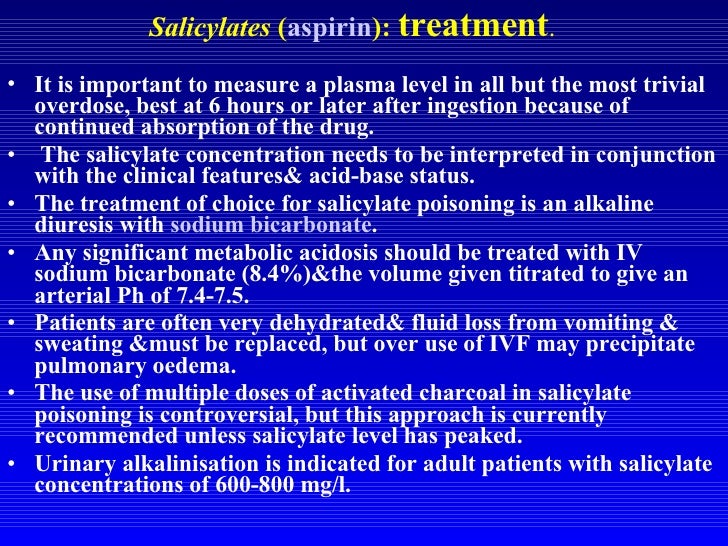

In addition, enteric coated tablets, the formation of bezoars (or concretions) in the GI tract, and pyloric stenosis may be present, which may delay the peak even longer. While aspirin levels are often detected within an hour of ingestion, keep in mind that the peak serum aspirin level may not occur until approximately 6 hours after the ingestion. Repeat aspirin levels, monitoring the pH of the blood and the patient’s clinical status are much more useful. A single serum level is not that helpful. In acute overdose, plasma aspirin concentrations between 10-30 mg/dL are considered therapeutic and greater than 30 mg/dL are associated with toxicity. What Does the Salicylate Level Mean in Overdose? Nausea and vomiting may result because aspirin is a direct gastric irritant, and aspirin decreases the production of prostaglandins which normally provide protection to the gastric mucosa.

Hypoglycemia results from altered carbohydrate metabolism. This inhibition of the Krebs cycle and uncoupling of oxidative phosphorylation lead to increased heat production and hyperthermia. Metabolic acidosis is also a result of accumulation of lactate, pyrvuvate and other organic acids that occurs as a result of the inhibition of the Krebs cycle. The body responds to hyperventilation by having the kidneys produce more bicarbonate and excrete more potassium which leads to an elevated anion gap metabolic acidosis. The mechanisms are multifactorial.Īspirin has a direct effect on the respiratory center in the brain leading to hyperventilation. Understanding the mechanisms of toxicity can aid in understanding the effects of the overdose. What Are the Mechanisms of Aspirin Toxicity? Both acute and chronic toxicity may be associated with coagulopathy. Severe toxicity can result in seizures, coma, arrhythmias and non-cardiogenic pulmonary edema. Other metabolic changes may include hypernatremia, hypokalemia and hypoglycemia. A mixed respiratory alkalosis (from hyperventilation as a result of respiratory stimulation) and anion gap acidosis may also be present. Initial effects of overdose may include nausea, vomiting, tinnitus, and hyperventilation. As a result, health care professionals should be familiar with the signs and symptoms of aspirin overdose. Based on recent data published in the American Journal of Preventive Medicine, one-half of adults surveyed aged 45-75 years-old reported regular aspirin use. The discovery, however, that aspirin can decrease the incidence of coronary artery disease has led to its increased use by many U.S. The use of aspirin as a pain reliever and antipyretic has declined over the years with the increased use of acetaminophen and NSAIDs and the historical association of aspirin and Reye’s Syndrome in children.


 0 kommentar(er)
0 kommentar(er)
